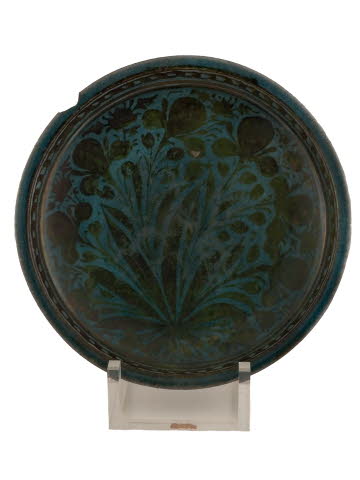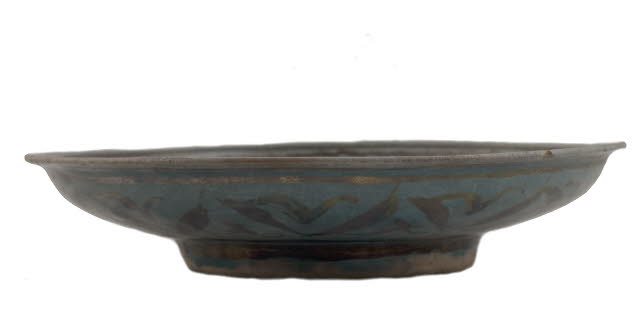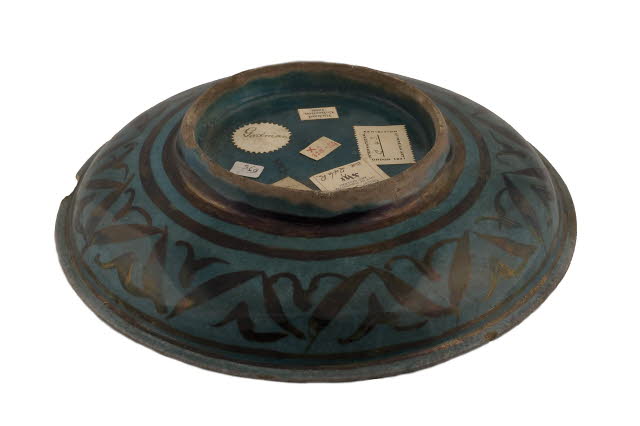Dish
BackDescription:
Shallow dish with everted rim, ring foot, glazed base. Stonepaste fabric, white slip, transparent turquoise glaze, lustre overglaze. Decorated in centre with large iris plant with seven blossoms and flowers with tendrils between them, chain band in cavetto. Exterior decorated with lancet leaves and tendrils in diaper pattern.
Object type: | dish |
Museum number: | G.369 |
Culture/period: | Safavid dynasty |
Date: | 17thC(late) |
Production place: | Made in: Iran |
Materials: | ceramic, stonepaste |
Technique: | painted, lustred, glazed |
Dimensions: | Diameter: 23.30 cm (rim) Diameter: 11.30 cm (base) Height: 4.30 cm |
Location: | 26 |
Acquisition names: | Bequeathed by: Miss Edith Godman |
Acquisition date: | 1983 |
Curator's comments:
The stickers on the base of this lustre painted dish reveal the many contexts in which the vessel was owned and displayed. One specifies that the object appeared at the 1931 London International Exhibition of Persian Art. These stickers indicate the high status of Persian lustreware in Europe at this time. The dish initially left Iran following its acquisition by Julius Richard (1816–91), a photographer and amateur archaeologist. Frederick Du Cane Godman (1834–1919) then purchased it, and it was subsequently bequeathed to the Museum. Labels on base include: Richard Collection 1889; City of Manchester Art Gallery 5459, B.H 246R; International Exhibition of Persian Art London 1931 G43; X.325 -54 Godman.


